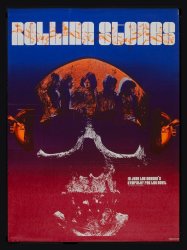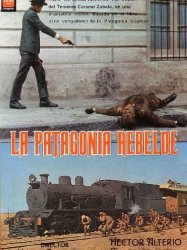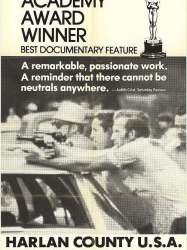Films with theme "Documentary films about anarchism", sorted by revenue

Freedomfighters (1996)
, 2h2Directed by Vicente Aranda
Origin Espagne
Genres Drama, War, Historical
Themes Films about anarchism, Politique, Documentary films about politics, Documentary films about anarchism, Political films
Actors Ana Belén, Victoria Abril, Ariadna Gil, Miguel Bosé, Jorge Sanz, José Sancho or Pepe Sancho
The movie is set in 1936 in Barcelona in the midst of the Spanish Revolution and Spanish Civil War. Militia women Pilar (Ana Belen) and Floren (Victoria Abril) are joined by former prostitute Charo (Loles Leon) and former nun Maria (Ariadna Gil). The film opens with scenes of working class militants demolishing and burning religious icons, as they shout "down with Capitalism!" and "long live the libertarian revolution!"

Sacco and Vanzetti (2006)
, 1h20Genres Documentary, Historical
Themes Prison films, Documentary films about historical events, Documentary films about politics, Documentary films about anarchism, Political films, Films about capital punishment
Actors Henry Fonda, Giuliano Montaldo, Tony Shalhoub, John Turturro, Studs Terkel

To Die in Madrid (1963)
, 1h25Origin France
Genres Documentary
Themes Films about anarchism, Politique, Documentary films about war, Documentary films about historical events, Documentary films about politics, Documentary films about anarchism, Political films
Actors John Gielgud, Irene Worth, Suzanne Flon, Germaine Montero, Pierre Vaneck, Jean Vilar
1936. Une guerre civile éclate en Espagne. Durant quatre années, Républicains et Nationalistes s'affrontent jusqu'à la dictature franquiste.

Sympathy for the Devil (1968)
, 1h50Directed by Jean-Luc Godard
Genres Documentary, Musical
Themes Films about anarchism, Films about music and musicians, Politique, Documentary films about music and musicians, Documentary films about politics, Documentary films about anarchism, Musical films, Political films
Actors Mick Jagger, Marianne Faithfull, Anne Wiazemsky, Iain Quarrier, Jean-Luc Godard, James Fox
Composing the film's main narrative thread are several long, uninterrupted shots of The Rolling Stones in a sound studio, recording and rerecording various parts to "Sympathy for the Devil." The dissolution of Stone Brian Jones is vividly portrayed, and the chaos of 1968 is made clear when a line referring to the killing of John F. Kennedy is heard changed to the plural after the assassination of Robert F. Kennedy in June.

Sacco & Vanzetti (1971)
, 2hDirected by Giuliano Montaldo
Origin Italie
Genres Drama, Historical, Crime
Themes Films about anarchism, Politique, Prison films, Documentary films about politics, Documentary films about anarchism, Political films, Films about capital punishment
Actors Gian Maria Volonté, Riccardo Cucciolla, Cyril Cusack, Geoffrey Keen, Rosanna Fratello, Milo O'Shea
Un hold-up sanglant est commis le 15 avril 1920, dans le Massachusetts. Deux anarchistes d'origine italienne, Nicola Sacco et Bartolomeo Vanzetti sont arrêtés. Malgré le manque de preuves formelles, ils sont condamnés à mort et envoyés à la chaise électrique.

Rebellion in Patagonia (1974)
, 1h47Directed by Héctor Olivera
Origin Argentine
Genres Drama, Thriller, Historical
Themes Films about anarchism, Politique, Documentary films about politics, Documentary films about anarchism, Political films
Actors Héctor Alterio, Federico Luppi, Héctor Pellegrini, Osvaldo Terranova
Buenos Aires, janvier 1923. Un inconnu (dans les faits l'anarchiste Kurt Wilckens) assassine le lieutenant-colonel Zavala (en réalité Héctor Benigno Varela).

The Supper (1974)
, 50minutesDirected by Pere Portabella
Genres Documentary
Themes Documentary films about politics, Documentary films about anarchism, Political films

Harlan County U.S.A. (1977)
, 1h43Directed by Barbara Kopple
Origin USA
Genres Documentary
Themes Environmental films, Films about anarchism, Politique, Films about the labor movement, Documentary films about business, Documentary films about environmental issues, Documentary films about politics, Documentary films about technology, Documentary films about anarchism, Political films
Kopple initially intended to make a film about Kenzie, Miners for Democracy and the attempt to unseat Tony Boyle. When miners at the Brookside Mine in Harlan County, Kentucky went on strike in June 1972, Kopple went there to film the strike against Duke Power Company which the UMWA had helped to organize. The strike proved a more interesting subject, so Kopple switched the focus of her film.
 , 1h
, 1hGenres Documentary
Themes Films about religion, Documentary films about historical events, Documentary films about politics, Documentary films about religion, Documentary films about anarchism, Political films, Films about Jews and Judaism

Karl Hess: Toward Liberty (1980)
, 26minutesDirected by Peter Ladue
Origin USA
Genres Documentary
Themes Documentary films about politics, Documentary films about anarchism, Political films
Actors Kevin Burns

Anarchism in America (1983)
, 1h15Genres Documentary
Themes Documentary films about historical events, Documentary films about politics, Documentary films about anarchism, Political films
Actors Jello Biafra

Living the Utopia (1997)
, 1h36Genres Documentary, Historical
Themes Documentary films about historical events, Documentary films about politics, Documentary films about anarchism, Political films
Documentaire de Juan Gamero, F. Rios, Mariona Roca, Mitzi Kotnik, sur l'Espagne libertaire de 1936 dans lequel une trentaine d'anciens militants anarchistes témoignent de l'application concrète de l'anarchisme par plusieurs millions de personnes en Catalogne et en Aragon.

Breaking the Spell (1999)
, 1h3Themes Documentary films about politics, Documentary films about anarchism, Political films

Anarchists (2000)
Origin Uruguay
Genres Documentary
Themes Documentary films about historical events, Documentary films about politics, Documentary films about anarchism, Political films
The documentary covers two cities, Montevideo and Buenos Aires, primarily in the 1920s and 1930s, and the men of action who migrated in from Spain, Germany, Russia and elsewhere during this time. These romantic gunmen committed their acts, not for personal gain but to fight against a regime they perceived as oppressive and repressive.
 , 57minutes
, 57minutesOrigin USA
Themes Documentary films about historical events, Documentary films about politics, Documentary films about anarchism, Political films
The film uses archived letters, speeches and documents to cover Bartolomeo Vanzetti's arrival to the United States as an immigrant, his involvement with Nicola Sacco, and the events of his trial leading up to his execution in Massachusetts in 1927.
 Connection
Connection